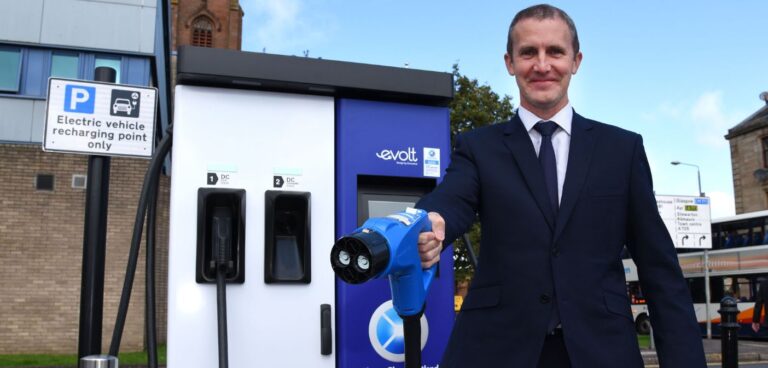A new public EV charging fund will be launched in Scotland that seeks to attract investment from the private sector.
The £60m Public Electric Vehicle Infrastructure Fund was announced as part of the Scottish government’s newly published draft vision statement for public EV charging provision in Scotland.
It aims to building on existing provision and seeks to deliver more right chargers in right places. The fund will made available to local authorities in Scotland over the next four years with approximately half of the funding anticipated to be invested from the private sector.
According to Transport Scotland, the measure has the potential to double the size of the country’s current £50m public charging network of over 2,100 chargepoints.
The new draft vision also relates to wider policies, including a commitment to reduce car kilometres travelled by 20% by 2030. To speed up new strategies and help better identify chargepoint requirements, £350,000 to support six pathfinder projects across Scotland has also been announced.
Scotland’s cabinet secretary for net zero, energy and transport, Michael Matheson, said: “To meet our climate targets, we need vehicles to be electric, and so we require a seamless network of public electric vehicle chargers, that works for everyone, all of the time.
“Our draft vision provides a clear picture of what electric vehicle charging networks must deliver for drivers across Scotland, and our priorities for achieving those changes.
“With demand for electric vehicles rapidly increasing thanks to government incentives and support – public and private sector partnerships will now be key in attracting investment and scaling provision at pace.
“The £60m Public Electric Vehicle Infrastructure Fund will draw in and smooth commercial investment so that the future charging network works for everyone, while at the same time potentially doubling the size of our public network here in Scotland.”
The Scottish government will work with design specialist V&A Dundee to ensure any new charging infrastructure does not impede pedestrian access to pavements and their ability to move around freely.





